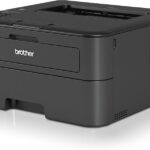Resetting a Chromebook with enterprise enrollment can be tricky. Many users find themselves stuck when trying to restore their device to factory settings. To factory reset a Chromebook with enterprise enrollment, you’ll need to use the Chromebook Recovery Utility or contact your IT administrator.
Enterprise enrollment links a Chromebook to an organization’s network. This feature helps schools and businesses manage devices. But it can be a hurdle when you need to reset the device.
The process to reset varies based on your specific situation. Some methods involve using developer mode, while others require contacting your IT team. We’ll explore these options and guide you through the steps.
| Reset Method | Requires Admin Access | Removes Enrollment |
|---|---|---|
| Recovery USB | No | Yes |
| Developer Mode | No | Yes |
| Admin Reset | Yes | Yes |
Factory Resetting an Enterprise-Enrolled Chromebook
Chromebooks managed by an organization (like a school or business) have enterprise enrollment, which adds a layer of security and control. This means a simple Powerwash won’t fully reset the device. Here’s how to factory reset an enterprise-enrolled Chromebook:
Important Note: This process will wipe all data on the Chromebook. Back up any important files before proceeding.
1. Start the Reset Process:
* **Turn off the Chromebook.**
* **Press and hold Esc + Refresh + Power.** (The Refresh key is where the F3 key would be on a typical keyboard.)
* **Release the keys when the Chromebook starts up.** You'll likely see a message saying "Chrome OS is missing or damaged."2. Enter Developer Mode:
* **Press Ctrl + D.**
* **Press Enter to confirm and enter Developer Mode.** The Chromebook will restart and begin the process of enabling Developer Mode. This can take several minutes.3. (If Needed) Bypass Developer Mode Block:
* Some organizations block Developer Mode. If you see a message saying it's blocked, **do not turn off the Chromebook.**
* Instead, repeat Step 1 (Esc + Refresh + Power) and then try Ctrl + D again. You may need to repeat this a few times.
* The Chromebook should eventually restart and enter Developer Mode.4. Complete the Reset:
* **Once Developer Mode is enabled, the Chromebook will restart again.**
* **At the "OS verification is OFF" screen, press Ctrl + D again.**
* **The Chromebook will now reset itself to factory settings.** This will remove the enterprise enrollment and any user data.5. Re-Enrollment (If Needed):
* **After the reset, the Chromebook will start up and guide you through the initial setup process.**
* **If the device is still linked to the organization, it will likely prompt you to re-enroll.** Contact your organization's IT administrator for assistance with re-enrollment or if you have any questions.| Step | Action |
|---|---|
| 1 | Turn off Chromebook; press Esc + Refresh + Power |
| 2 | Press Ctrl + D, then Enter |
| 3 (If Needed) | Repeat Step 1 and 2 until Developer Mode starts |
| 4 | Press Ctrl + D again at “OS verification is OFF” screen |
| 5 | Follow onscreen setup; contact IT if needed for re-enrollment |
Important Considerations:
- Forced Re-enrollment: Some organizations enable forced re-enrollment. Even after a factory reset, the Chromebook may automatically re-enroll when it connects to the internet.
- IT Department Assistance: If you’re unsure about any steps or encounter difficulties, it’s best to contact your organization’s IT department for guidance. They can provide specific instructions and ensure the Chromebook is properly reset and re-enrolled if necessary.
Understanding Enterprise Enrollment on Chromebooks
Enterprise enrollment on Chromebooks enables organizations to manage devices and users effectively. It offers control and security features while imposing certain limitations on device usage.
What Is Enterprise Enrollment
Enterprise enrollment links a Chromebook to an organization’s management system. This process allows IT administrators to control device settings and access. Enrolled Chromebooks are part of a managed system at schools, businesses, or other organizations.
The enrollment ties the device to the organization’s domain. It restricts who can sign in and what they can do on the device. Administrators can push policies, apps, and extensions to these Chromebooks remotely.
Users typically can’t remove enterprise enrollment without administrator permission. This ensures devices remain under organizational control.
Benefits and Limitations of Enterprise Enrolled Devices
Enterprise enrolled Chromebooks offer several advantages for organizations:
- Centralized management
- Enhanced security
- Automatic updates
- Easier app distribution
| Benefit | Description |
|---|---|
| Security | Admins can enforce password policies and disable risky features |
| Control | IT can manage settings and restrict access to certain websites |
| Efficiency | Bulk app installation and policy updates save time |
However, managed Chromebooks also have limitations:
- Restricted user freedom
- Limited personalization options
- Potential privacy concerns
Users can’t install unapproved apps or change certain settings. Personal Google accounts may be blocked. Administrators can potentially monitor device usage.
These restrictions help maintain security but can frustrate users who want more control over their devices.
Pre-Reset Preparation
Before resetting a Chromebook with enterprise enrollment, it’s crucial to take certain steps. These precautions ensure your data is safe and you have the right to reset the device.
Backing Up Data
Start by saving your important files. Connect an external drive to your Chromebook. Open the Files app and drag your documents, photos, and downloads to the external storage.
Use Google Drive to back up online. Sign in to your Google account. Upload files to Drive for safekeeping. This method works well for smaller file sizes.
Check your Chrome browser bookmarks. Export them to an HTML file. Save this file to your external drive or email it to yourself.
Review installed Android apps. Note which ones you want to reinstall later. Some app data may not transfer easily.
| Data Type | Backup Method |
|---|---|
| Files | External drive or Google Drive |
| Bookmarks | Export to HTML |
| App list | Manual note-taking |
Verifying Chromebook Ownership
Ensure you have the right to reset the Chromebook. If it’s a personal device, confirm you know the Google account password. This account must be the primary one on the device.
For a used Chromebook, check if it’s still enrolled in a previous organization. Look for “Managed by …” in the sign-in screen’s bottom left corner.
Contact the previous owner if you see this message. Ask them to unenroll the device from their management system. They may need to work with their IT department to complete this step.
If you’re resetting a work or school Chromebook, get permission first. Talk to your IT administrator. They can guide you through the proper reset procedure or do it for you.
Resetting Chromebook to Factory Settings
Resetting a Chromebook to factory settings erases all local data and removes enterprise enrollment. This process can solve many issues and prepare the device for a new user.
Performing a Powerwash
To reset your Chromebook, you can perform a Powerwash. This action erases all local data on the device. To start, sign out of your Chromebook. Press Ctrl + Alt + Shift + R, then select Restart. In the box that appears, choose Powerwash, then Continue.
After the reset, your Chromebook will restart. You’ll see a setup screen as if the device were new. This process doesn’t affect files stored in Google Drive or on external devices.
Remember to back up important local files before Powerwashing. The reset can’t be undone once started.
Removing Enterprise Enrollment via Powerwash
Enterprise enrollment links a Chromebook to an organization’s network. To remove this, you need admin permission. If granted, sign out of the Chromebook and press Ctrl + Alt + Shift + R. Select Restart, then Powerwash.
Choose Continue, then Powerwash again. The device will restart and remove the enterprise enrollment. You’ll see the welcome screen after the process completes.
If you lack admin rights, contact your IT department. They can wipe the device and remove it from the organization’s network.
Booting into Developer Mode for Reset
Developer mode offers another reset option. To enter this mode, turn off your Chromebook. Press and hold Esc + Refresh, then press the Power button. Release when you see the recovery screen.
Press Ctrl + D, then Enter. The Chromebook will reboot and show a warning screen. Press Ctrl + D again to enable Developer Mode. This process wipes all local data.
After entering Developer Mode, you can reset the device. Remember, this mode reduces security, so exit it after resetting unless needed for development purposes.
| Reset Method | Removes Enterprise Enrollment | Requires Admin Permission | Wipes Local Data |
|---|---|---|---|
| Powerwash | Yes (with permission) | Yes | Yes |
| Developer Mode | Yes | No | Yes |
Post-Reset Configuration and Troubleshooting
After resetting your Chromebook, you’ll need to set it up again and handle any issues that arise. This includes configuring your Google account, dealing with enterprise re-enrollment, and potentially contacting IT support.
Setting Up a Google Account
To begin using your Chromebook after a reset, you’ll need to set up a Google account. Turn on the device and follow the on-screen prompts. Select your language and connect to a Wi-Fi network.
When prompted, enter your Google account details. If you don’t have one, create a new account. This step is crucial for accessing Chrome OS features and syncing your data.
Enable two-factor authentication for added security. Choose which data to sync, such as bookmarks and passwords. You can customize these settings later in the Chrome browser.
| Setting | Recommendation |
|---|---|
| Sync | Enable |
| 2FA | Enable |
Dealing with Forced Re-enrollment
If your Chromebook is enterprise-managed, it may require re-enrollment after a reset. This process ensures the device remains under your organization’s control.
When you see the re-enrollment screen, enter your organization’s domain. You might need to log in with your work or school account. If unsure about the domain, check with your IT department.
Some Chromebooks may automatically re-enroll without user input. If this doesn’t happen, you may need your device’s serial number or a specific enrollment key from your administrator.
Contacting the IT Department or Administrator
If you encounter issues during re-enrollment or need specific settings, reach out to your IT department. They can provide necessary credentials or remotely assist with the process.
Keep your device’s serial number handy. You can find it on the bottom of the Chromebook or in the BIOS/UEFI settings. This information helps IT identify your specific device.
Ask about any required apps or extensions. Your administrator may need to push these to your device. They can also help with network configurations or security policies specific to your organization.
Frequently Asked Questions
Resetting a Chromebook with enterprise enrollment involves specific procedures and limitations. Several common questions arise about this process.
How do you powerwash a Chromebook with enterprise enrollment?
Powerwashing a Chromebook with enterprise enrollment is not possible without administrator access. The device must be unenrolled by an administrator before you can perform a powerwash.
Can enterprise enrollment be removed from a Chromebook without using developer mode?
No, you cannot remove enterprise enrollment without developer mode. Enterprise enrollment is designed to prevent unauthorized access or changes to managed devices.
What steps are required to reset a school managed Chromebook?
Resetting a school managed Chromebook requires administrator intervention. You must contact your school’s IT department to reset the device. They will need to unenroll it from the management system.
Is there a way to bypass enterprise enrollment during a Chromebook’s factory reset?
Bypassing enterprise enrollment during a factory reset is not possible. The enrollment is tied to the device’s hardware and will persist through resets.
How to deal with a Chromebook stuck on enterprise enrollment screen?
If your Chromebook is stuck on the enterprise enrollment screen, try these steps:
- Restart the device
- Check internet connection
- Contact your administrator
If problems persist, your IT department may need to re-enroll the device.
What methods exist to factory reset a Chromebook and remove the administrator account?
There are no user-level methods to factory reset a Chromebook and remove the administrator account. This action requires administrator privileges. Attempting to circumvent this can violate terms of use and may damage the device.
| Action | Requires Admin Access | Possible Without Enrollment |
|---|---|---|
| Powerwash | Yes | No |
| Factory Reset | Yes | No |
| Unenroll Device | Yes | No |
| Remove Admin Account | Yes | No |







